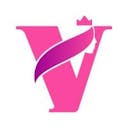To become a successful fashion designer in India, no official schooling or qualification is necessary, but it does not make the task any simpler. A mix of sketching, sewing, and design abilities, as well as knowledge of the fashion business and unwavering tenacity, are required to become a fashion designer. In addition, one will need to build a solid fashion portfolio and improve their overall knowledge of business and money.
7 Steps To Become A Fashion Designer
Here are the 7 steps to become a successful fashion designer in India:
Developing skills
Competent Fashion Designers have a wide exhibit of abilities, including drawing, an eye for shading and surface, a capacity to picture ideas in three measurements, and mechanical abilities. If you haven’t already mastered the art of sewing, seek professional help. Being able to sew tough fabric under tough settings can serve you well throughout your career, but you’ll need to practice because it’s a skill that few people have.
 Fashion Designer
Fashion Designer- Learn how materials move, drape, breathe, and behave when worn, among other things. To use fabric successfully while creating, you must have a thorough understanding of it. Know where to get things as well.
- Learn from prominent designers, not just who they are, but also about their histories, signature styles, education, and where they studied. Understanding this will assist you in becoming a better designer since you will be able to borrow and expand on their ideas.
- Begin to build these abilities at an early age. Prepare to put in a lot of hours to develop your skill. If you are pursuing a career in fashion, a little bit every day will help you get a profound grasp of the industry in the long run. Attempting to complete everything at once may lead to frustration.
Be professional
It’s a good idea to earn a diploma or degree in fashion design or a comparable program if you can. You’ll gain a lot of knowledge, build valuable early contacts, and have plenty of opportunities to demonstrate your abilities in a less judgmental environment.
- Acquire a fashion design degree. The programs usually last three or four years. Drawing, colors and composition, pattern-making, and draping will all be handled. In addition to acquiring practical skills like these, you’ll be working with industry professionals who may serve as future connections and provide you with first-hand guidance and advice on your work.
- Fill out an application for an internship or apprenticeship. Find a fashion internship if you just believe that real-world experience will be more beneficial to you. To apply, you must have an exceptional portfolio and be prepared to start from scratch. Again, the contacts you create via your internship or apprenticeship will be crucial as you pursue a career in fashion, and working with professionals in the field will allow you to gain valuable experience.
Find your niche
You may need to start from the beginning, but you must have certain goals in mind for the sort of design you want to accomplish for the rest of your life. Haute couture, ready-to-wear, fitness/leisure gear, the mainstream market, or niches like environmental clothing pique your interest? You’ll need to weigh the benefits and drawbacks of each before making your final decision on which path to choose. For example-
- Women’s daywear, women’s evening wear
- Men’s casual clothing
- Boys’ and/or girls’ clothing
- adolescent clothing
- Fitness/sportswear/leisurewear
- Knitwear
- Outerwear, adventure wear
- Bridal gowns
Get inspiration from your competitors
Observe and take note of the fabric they are using, the zipper size they are using (to ensure that their clothing is robust enough to accommodate it), the fabric quality for features such as absorption coefficient, comfort, breathability, or care, and the colors that are popular in your region. It’s not copying when you start with the attributes of your competitors: it’s observation.
You will discover what makes a “favorite” piece of clothes by picking the best of each piece of clothing and studying it. They’re frequently the best-selling items. Your clients (whether they’re shop purchasers or everyday individuals) want something that looks nice on them, to begin with. Extravagant pieces are worn only a few times a year, and though they are lovely, they may not bring you a livable wage.
 Fashion Designer
Fashion DesignerSee the market trends and ask your customers what they need
Be realistic: you will have a difficult time selling winter coats if you live in a hot country. Take a look at yourself. What do actual people require and desire? For example, if you want to develop a full collection, you’ll need more tops than bottoms because most people’s wardrobes contain more tops than bottoms.
Setting up for success
There are several methods to obtain employment as a designer in the fashion business, depending on the sort of design you want to do. In other circumstances, being adaptable will be beneficial, allowing you to gain experience and then transition to your true love later. In most circumstances, you’ll need to be persistent and apply to a variety of locations to get a foot in the door. For beginners, consider applying to the following places:
- Look for internships, entry-level paid work, assistants to designers, and other opportunities at existing fashion businesses and designers.
- Costume jobs in movie studios, theatres, and costume shops, for example.
- Online job postings are available through a variety of online employment organizations.
- Use your college or fashion industry relationships to get your foot in the door through word of mouth. This is a terrific method to get started in an industry that values what people who are already well-positioned have to say.
Create your own fashion portfolio
When applying for design jobs and internships, your design portfolio will be significant since it will be your chance to advertise yourself and your work. Your portfolio should showcase your greatest work while also emphasizing your abilities and inventiveness.
 Fashion Designer
Fashion DesignerTo demonstrate that you are a professional designer, use a high-quality folder. In your portfolio, include the following:
- Drawings that have been hand-drawn or pictures of these sketches
- Designs created using a computer
- Reference Letter
- Pages for color or textile presentations
Fashion is the way you perceive clothes and their styling. It is an important tool to empower women and men alike and make them feel confident. You might have a natural flair for fashion or you can study and hone your skill with practice.

